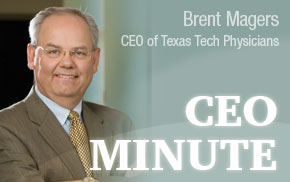 Americans seem to love “blue-ribbon commissions” and for good reason—many times these
groups do fine work. They influence national policy. They set priorities. Such groups,
composed of exceptional thinkers, investigate or analyze a given question.
Americans seem to love “blue-ribbon commissions” and for good reason—many times these
groups do fine work. They influence national policy. They set priorities. Such groups,
composed of exceptional thinkers, investigate or analyze a given question.One of the most famous in medical education is the Flexner Report. Although done in 1910, it is still influential to this day. Perhaps, it should be said that the Flexner Report is more the work of one man, Abraham Flexner. Nevertheless it was commissioned by the American Medical Association and its Council on Medical Education and funded by the Carnegie Foundation—so, a number of people were involved in asking for the study, financing it, or having input into it.
But, really, I want to talk about a more recent report—one prepared by the Institute of Medicine (IOM) and released on July 29th. Its purpose was to review the financing and governance of Graduate Medical Education (GME) and to make recommendations for improving it. According to the report, GME’s purpose in our country is to “produce a physician workforce that is ready to provide high-quality, patient-centered, affordable health care.”
What does the group recommend? Well, they have six goals for the future of GME financing and governance: the development of a physician workforce that is better prepared to help lead and improve an evolving healthcare system at lower costs; GME programs that are better designed toward achieving that goal; increased accountability for GME programs; clarification and increased oversight of GME use of public funds; using GME funds to maximize program goals; and to reduce unwanted negative effects of transitions in GME funding methods.
All of this is quite important to the Texas Tech School of Medicine and the approximately 140 other allopathic medical schools in the country, as well as to the 26 or so osteopathic medical schools. We have had a national cap since 1997 on the number of residencies slots financed by Medicare. Yet, the number of U.S. residency positions has increased by 17.5% in the past decade. Residency programs are, of course, the 3 to 7 year training programs that follow medical school before a physician is ready to practice independently. Through either Medicare or other sources--current government funding is an estimated $15 billion per year.
There are several vexing problems that worry experts in this area—I will just mention one--the increasingly specialized physician workforce which is not addressing the needs for primary care.
PS—Last week I wrote about HIPAA and privacy issues and mentioned a breach of privacy by Community Health Systems (CHS) exposing 4.5 million patients' data. This week, Forbes magazine reports that it will be costly for CHS--the total bill could be somewhere between $75 million and $150 million. Furthermore, the first class-action lawsuit was filed within hours after the breach was announced. More reasons why we must be so careful with the personal data of others.
